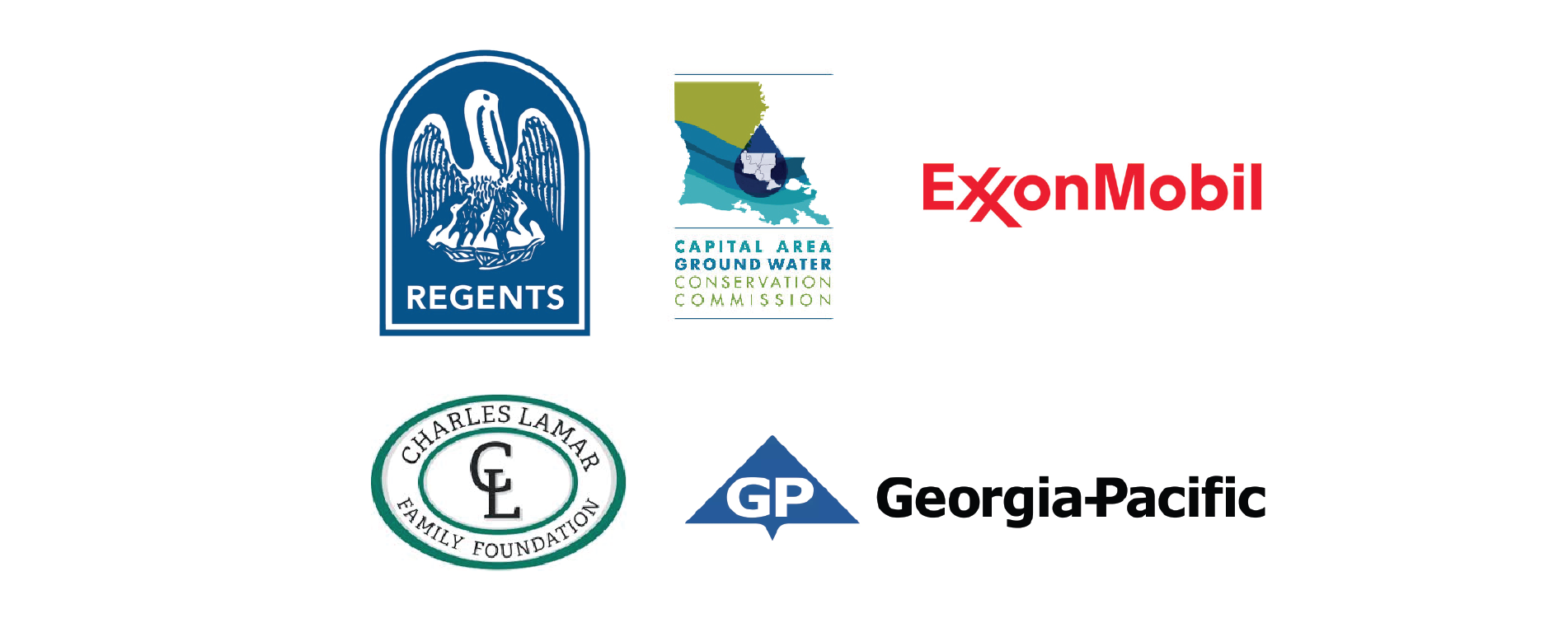Baton Rouge Saltwater Intrusion Study
Project Sponsors: Louisiana Board of Regents-ITRS, Capital Area Ground Water Conservation Commission of Louisiana, Exxon Mobil, Georgia-Pacific Corporation, U.S. Geological Survey, Charles Lamar Family Foundation
Principal Investigator: Frank Tsai (LSU)
Graduate Student: Jina Yin
Award Length: 2015-2018 (BoR-ITRS, CAGWCC, Industries), 2018-2019 (CLFF), 2018-2019 (USGS-104B)

Project Summary: Groundwater system beneath the Baton Rouge area provides steady supply of affordable and clean fresh water to the public, agricultural, and industrial demands. However, excessive pumping in the past decades has caused the groundwater storage to decline, water quality to degrade, and saltwater encroachment to worsen. Thus a reliable groundwater flow and solute transport model is needed to promote sustainable usage of groundwater resources, and to come up proper aquifer management and remediation strategies. In my study, a 3-D groundwater model, with well-characterized subsurface environment and consideration of uncertainty, has been constructed to serve the goals of: (1) predicting salinity transport in the Baton Rouge aquifer system; (2) evaluating different conjunctive hydraulic control approaches for groundwater management and aquifer remediation; (3) developing reliable and robust simulation-optimization frameworks for saltwater intrusion mitigation design. The study firstly simulates solute transport and conducts water budget analysis to understand how groundwater withdrawal affects salinity transport. Then the study proposes several hydraulic control approaches to manage the multi-aquifer system in Baton Rouge. Finally, different optimization models, including deterministic and stochastic models, are formulated to obtain reliable management strategies. During the study, we realize that using physically-based simulation model to optimize aquifer remediation strategies over the complicated groundwater system is very computationally costly and even impossible sometimes. To overcome this obstacle, response surface surrogate models and machine learning models were developed to improve computational efficiency. At the same time, ensemble surrogates were built using Bayesian model averaging method and Bayesian set pair analysis to quantify uncertainty involved in the prediction of salinity. According to the study: (1) conjunctive use of hydraulic control approaches can effectively mitigate saltwater intrusion problem; (2) surrogate models show strong predictive capability and efficiency in groundwater remediation design; (3) ensemble-surrogate-assisted optimization approach is robust and provide more-reliable groundwater management strategies comparing to single-surrogate-based model.
